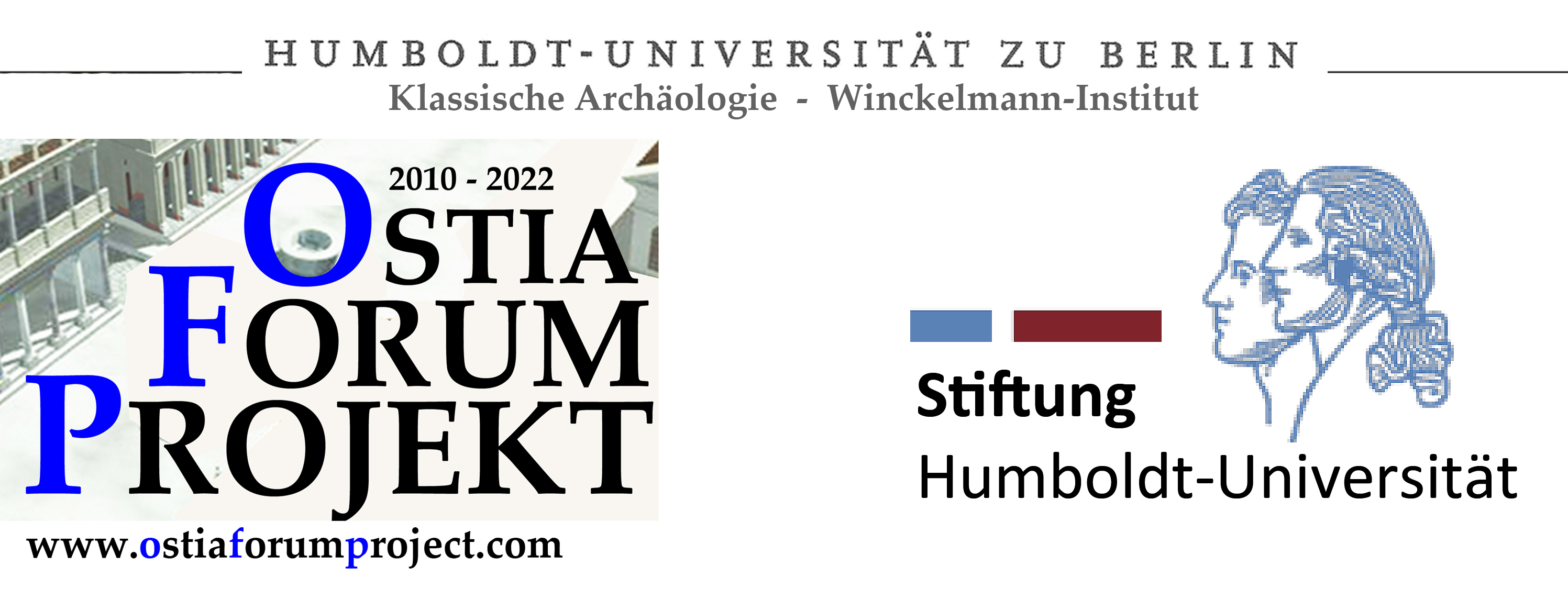The project related activities in Berlin do always include keeping this website up-to-date. This is done in close collaboration between Prof. Dr. Axel Gering and Daniel Damgaard.
Other project related activities do also include bachelor- and master’s theses, but also corporations between personel at Humboldt-University and other universities and institutes. These will shortly be presented below, thus providing an overview of what is going on in Berlin between excavations. Indeed, a part of the excavations is also the post-excavation work in Berlin, which include the interesting analyses of finds and contexts and their meaning in the wider context. These are, however, described separately here. Below, you will find short descriptions of different activitives related to the project.
January 24 2022, the Ostia Forum Project was visited by Jakob Korbel from the Technical University of Berlin. He and his colleague have been working on a virtual reality room of TFR 2. The purpose is to create a virtual space, in which people can experince the room as it is today, but also how the area would have been in Antiquity. The area of TFR did belong to a major sanctuary from the 3rd century BCE before its present layout as Hadrianic shops (See themes 2 and 4). In the virtual space, people are going to be able to see a selection of finds with an attached description.
Neele Theunert is currently writing her master’s thesis on the temple in the Palaestra of the Forum’s Baths. Her focus is not only on the architecture, but also on the venerated deity.
Fergus Rüter is currently writing his master’s thesis on cultural heritage in Ostia. He his focussing on the restoration methods utilised on the early 20th century, where there was a desire to make a restoration look as authentic as possible. It was not always made clear, which parts were restored and which were not. This can create some problems for archaeologists working with and analysing walls.
Since February 2020, an initiative was founded. It is called the Ostia Graduiertenkolleg and consists of six ph.d. candidates, who are all supervised by Prof. Dr. Axel Gering. It was deemed necessary to establish this graduate college, since the discoveries done by the Ostia Forum Project during the last decade have yielded so much evidence, that it was necessary to “outsource” the material. It was therefore with great enthusiasm that the Stiftung Humboldt University agreed to fund this three year graduate college (runs until February 2023), in which six ph.d. candidates can work with archaeological material and finally publish their results.
Since October 2020, Steven Götz has been working on the 3D reconstructions of the different structures in the Forum, but with a focal point on the discoveries from TFR. You can read more about these discoveries here, here and here. You can also see some of the 3D work conducted by Steven Götz here.
Lena Kaumanns finished her dissertation in 2021. She had been working on the interpretation of the building history of ABP and CDB.
Alexander Dorn wrote his master’s thesis on coins found in TDV in 2018 in the academic years 2018-2021.
SophieMenge wrote her master’s thesis on the amphorae found in TFR 2 in the period between 2016 and 2019 in the academic year 2018-2019.
Rocco Steputat wrote his master’s thesis on the votive deposits from the excavations in TFR 2 between 2016 and 2019 in the academic year 2018-2019.
Ilya Poskonin wrote his master’s thesis on the black glazed ware from the excavations in TFR 2 in the period 2016-2019 in the academic year 2018-2019.
In the period from the March 1 until the middle of July 2014, Daniel Damgaard and Prof. Dr. Axel Gering founded the Ostia Forum Project in Berlin. Daniel Damgaard furthermore prepared the publication of his typology of roof tiles (master thesis from 2013 – “Ostian Marble Roof tiles: a typology“) for Römische Mitteilungen. Furthermore, he is working on the content of this website and assists Prof. Dr. Axel Gering and the Berlin team in post excavation work, for example the classification of ceramics and small-finds, and the interpretation of the finds-contexts and their chronological sequence. In 2012, this was done for the northern part of MFP and the entire area of MFW. The southern part of MFP and the entire area of MFR and MFD will be processed this year.
Felix Hülsebeck is preparing his master’s thesis about the interpretation of the sequences and the harris matrix of his trenches in the southern part of MFP from 2011, in the northern part of MFP from 2012 and in MFD from 2013.
Undine Lieberwirth has prepared her 3D voxel-model of MFW trenches for publication. The publication can be found here.
Bernhard Strackenbrock is preparing his 3D modelling of MFP and MFR for publication.
Johannes Trockels wrote his bachelor thesis on the MFP-apse in 2012.
In cooperation with Hans Peter Thamm, we will prepare an application for a future extension of the 3-D-modelling of the monumental centre of Ostia west of the Forum around the plaza of Tempio Rotondo (PTR).
In accordance with Prof. Dr. Stephan G. Schmid, Prof. Dr. Axel Gering will finish the publication of the cultic topography of the Forum in late imperial and late antique periods.
